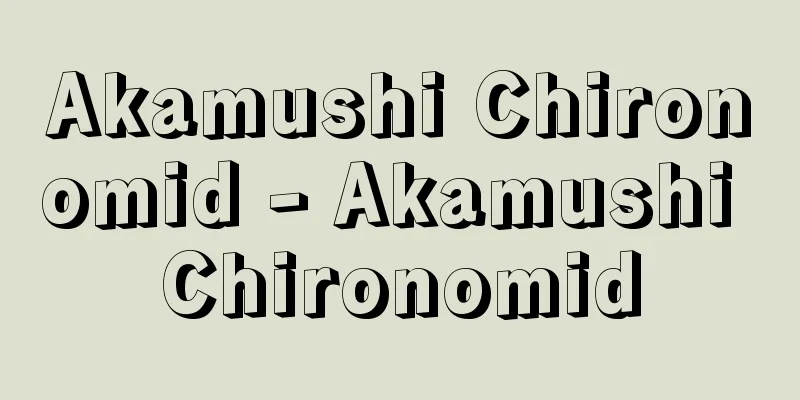Hideyo Noguchi

|
Bacteriologist. Born as the eldest son of poor farmers Sayosuke (1851-1923) and Shika (1853-1918) in Okinajima Village, Fukushima Prefecture (now Inawashiro Town), Noguchi's childhood name was Seisaku. When he was in elementary school, the instructor Kobayashi Sakae (1860-1940) recognized Noguchi's genius and provided him with tuition to go on to higher elementary school. After graduating, he became a clerk at the clinic of Watanabe Kanae (1858-1932) in Aizu-Wakamatsu, where he studied medicine and foreign languages for four years. He moved to Tokyo in 1896 (Meiji 29) and passed the first stage of the medical practice examination. He immediately became a janitor at Takayama Dental College through the introduction of dentist Chiwaki Morinosuke (1870-1947). In 1897, he entered Saisei Gakusha and passed the second stage of the medical practice examination five months later. The following year, in 1898, he was employed as an assistant to the Institute of Infectious Diseases of the Japan Private Hygiene Association (director: Kitasato Shibasaburo), and began his career in bacteriology. In 1899, American bacteriologist Flexner visited Japan, and he served as his interpreter, which prompted him to decide to go to the United States. He then served as an assistant quarantine officer at Yokohama Port, and then worked on plague prevention in Niuzhuang (Yingkou), China. In December 1900 (Meiji 33), with the support of Chiwaki, he traveled to the United States and visited Flexner at the University of Pennsylvania, where he became Flexner's assistant and was introduced to Mitchell, a leading researcher in snake venom. Noguchi began researching snake venom, and in 1902 published his first paper jointly with Flexner. In 1903, he studied serology under Arrhenius and Thorvald Madsen (1870-1957) at the National Serum Institute in Copenhagen, Denmark, and returned to the United States the following year in 1904 to join the newly established Rockefeller Institute, where Flexner was the first director. In 1911, he succeeded in culturing the spirochete that causes syphilis in pure culture, becoming known worldwide and receiving a doctorate in medicine from Kyoto Imperial University. Then, in 1913 (Taisho 2), he confirmed that the syphilis spirochete was present in syphilitic tissue in the brain and spinal cord. In 1914, he was promoted to full member of the Rockefeller Institute, and in the same year, he received his doctorate in science from Tokyo Imperial University. In 1915, he was awarded the Imperial Academy Prize, and returned to Japan for the first time in 15 years, where he was warmly welcomed. There are many stories of how he showed great filial piety to his mother on this occasion, but he never spoke of his father. In 1918, he went to Ecuador to identify the causative agent of yellow fever, where he discovered the spirochete, but it was later determined that yellow fever was Weil's disease, and was the same as the Weil's disease spirochete. In 1923, he became a member of the Imperial Academy. In 1926, he succeeded in pure culture of the pathogen of Oroya fever, a malignant endemic disease in Peru, and also proved that the pathogen of Peruvian warts was the same species as the Oroya fever pathogen, and also identified the vector insect. In 1927 (Showa 2), he went to Africa to research yellow fever, and died of yellow fever in Accra, Ghana on May 21, 1928. The Noguchi Hideyo Memorial Museum is located in Inawashiro Town, Fukushima Prefecture, and the Dr. Noguchi Hideyo Memorial Medical Research Institute is located in Accra. [Tsunezaburo Fujino] [References] | | | | | |©Shogakukan Library "> Hideyo Noguchi Source: Shogakukan Encyclopedia Nipponica About Encyclopedia Nipponica Information | Legend |
|
細菌学者。福島県翁島(おきなじま)村(現、猪苗代(いなわしろ)町)の貧農佐代助(1851―1923)とシカ(1853―1918)の長男に生まれ、幼名は清作(せいさく)。尋常小学校のとき、訓導小林栄(1860―1940)は野口の英才を認め高等小学校進学の学費を与えた。卒業後、会津若松の渡部鼎(わたなべかなえ)(1858―1932)の医院の書生となり、4年間医学と外国語を習得。1896年(明治29)上京、医術開業前期試験に合格、ただちに歯科医血脇守之助(ちわきもりのすけ)(1870―1947)の紹介で高山歯科学院の用務員となり、1897年済生学舎に入り、5か月後、医術開業後期試験に合格した。翌1898年大日本私立衛生会伝染病研究所(所長は北里柴三郎(きたさとしばさぶろう))助手に採用され、細菌学の道に入った。1899年、アメリカの細菌学者フレクスナーが来日、その通訳を務めたことを機に渡米を決意した。その後、横浜港検疫官補、続いて中国の牛荘(営口)でのペスト防疫に従事した。1900年(明治33)12月、血脇の援助を得て渡米し、ペンシルベニア大学にフレクスナーを訪ね、彼の厚意で助手となり、またヘビ毒研究の大家ミッチェルを紹介された。野口はヘビ毒の研究をはじめ、1902年フレクスナーと連名で第1号の論文を発表した。1903年デンマーク、コペンハーゲンの国立血清研究所でアレニウスとマドセンThorvald Madsen(1870―1957)に血清学を学び、翌1904年アメリカに戻り、フレクスナーが初代所長を務める新設のロックフェラー研究所に入所した。1911年梅毒病原スピロヘータの純培養に成功、世界的にその名を知られ、京都帝国大学から医学博士を得た。ついで1913年(大正2)梅毒スピロヘータが脳と脊髄(せきずい)の梅毒組織内に存在することを確かめた。1914年ロックフェラー研究所正所員に昇進、同年東京帝国大学から理学博士を得た。1915年帝国学士院恩賜賞を授与され、15年ぶりに帰国、歓迎を受けた。この際、母親に孝養を尽くした美談は多いが、父とはともに語らなかった。 1918年黄熱病(おうねつびょう)原体解明のためエクアドルに赴き、病原スピロヘータを発見、しかしその後黄熱はワイル病であり、ワイル病スピロヘータと同一と判定された。1923年帝国学士院会員となる。1926年ペルーの悪性風土病オロヤ熱の病原体の純培養に成功、またペルー疣(いぼ)の病原体がオロヤ熱病原体と同一種であることを証明、媒介昆虫も確認した。1927年(昭和2)黄熱研究のためにアフリカに赴き、翌1928年5月21日ガーナのアクラで黄熱により死去した。福島県猪苗代町に野口英世記念館、アクラに野口英世博士記念医学研究所がある。 [藤野恒三郎] [参照項目] | | | | | |©小学館ライブラリー"> 野口英世 出典 小学館 日本大百科全書(ニッポニカ)日本大百科全書(ニッポニカ)について 情報 | 凡例 |
<<: Yonejiro Noguchi - Yonejiro Noguchi
Recommend
Barberry - Barberry
... There are about 500 species of Berberis (Engl...
Franco Sacchetti
Italian poet and novelist. Born into a distinguis...
Aokigahara Jukai - Aokigahara Jukai
(Narusawa Village, Minamitsuru District, Yamanashi...
Ishikari Coal Fields
Japan's largest coalfield, located in central...
Nitrocellulose - Nitrocellulose
A type of cellulose ester. It is generally called...
current mode logic
...Emitter-coupled logic circuit) A typical high-...
True View
1268-1341 (Bun'ei 5-Kokoku 2/Ryakuo 4) A Ji se...
Reticular formation
…It is sometimes simply called the reticular form...
Great Hell - Ojigoku
...A horseshoe-shaped explosion crater formed by ...
Kaga Hosho
A famous confectionery made and sold by Moroeya in...
People's China (English spelling)
A Japanese-language monthly magazine published in ...
Cerano (English spelling)
Around 1575 - 1632 Italian painter. His real name ...
Setouchi climate - Setouchi climate
One of the climate types in Japan, centered on th...
Gas exchange
The process by which a living organism takes in ox...
Rudbeckia - Rudbeckia
A general term for the genus Rudbeckia in the Ast...









